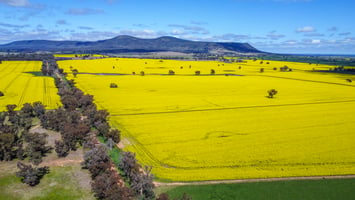The Australian agricultural industry has set an ambitious target: $100 billion per annum in farm...
Revolutionising Farm Connectivity with Tailored Technology Stacks

This article was originally published in the Australian Controlled Traffic Farming Association (ACTFA) newsletter.
The connectivity technology stack designed and employed on ‘Willaroo’ over the 2024 harvest was a game-changer on many fronts. ‘Willaroo’, a 16,500 ha Warakirri Cropping farm in northern NSW, is one of three farms participating in a Grain Automate project which is bringing robust connectivity to the working farms to explore what is possible and where the pitfalls and opportunities are. Through the Grain Automate initiative, the Grains Research and Development Corporation (GRDC) has partnered with Connected Farms to support the acceleration and adoption of automation and digital technologies in the Australian grains industry.
Each participating farm’s connectivity technology stack is customised to the specific farm size, initial connectivity state, method of farming and their future farming goals dependent on connectivity. Initial technology stacks on each farm were established in April 2024 for sowing, then were significantly expanded for harvest and continue to develop heading into the second year of the project. The tech stack on ‘Willaroo’ currently consists of ten CommsXtends, three Starlink Mobility – Satellite on the Move (SOTM) – devices incorporating High Performance Starlink units, three CommsXtend Remote LEO enabled devices and dynamic SIMs placed in the Swarmfarm robot and the CommsXtends on-farm.
Previously, ‘Willaroo’ struggled with poor coverage across 80% of its land and now is enjoying and experimenting with nearly 100% connectivity. CommsXtends (cellular expanders) featuring dynamic SIMs are placed in ten farm vehicles and machines that are mobile over the farmland, including seeding tractors, spreaders, sprayers and headers during their respective periods of activity. The dynamic SIMs use the strongest cellular signal available and convert it to robust Wi-Fi coverage. The devices detect, connect and use the strongest signal, dynamically changing between signals where required with vehicle movement over farmland and within the region, to always ensure the device is working with the strongest signal on offer. The reliable, portable, high-speed Wi-Fi bubble of approximately 40 m around the farm vehicle or machine also supports data transfer and Wi-Fi calling. The portability of CommsXtends has allowed them to be moved between vehicles and machines on ‘Willaroo’ over the cropping season.
Three Starlink Mobility – Satellite on the Move (SOTM) – devices incorporating High Performance Starlink solutions, have been placed on headers, sprayers or tractors used for various tasks over the cropping season. The High Performance units, using Starlink’s LEO satellite network, cater for data-intensive applications including variable rate technology over the fields to best support the precision agriculture systems on the ~16,500 ha of dry-land crops. The significant grunt of these SOTM devices made light work of the successful integration of CropScan grain analysis and Farmwave harvest vision systems to detect yield losses. The farmers were able to get this live data from the headers during harvest, providing real-time data for decision-making. Reports from ‘Willaroo’ are that the reliable connectivity has enabled better use of their current systems leading to increased efficiency.
Meanwhile, the mobile broadband data connectivity that is required to operate the Swarmfarm robot on ‘Willaroo’ has been developed using multiple connectivity inputs on the robot – a dynamic SIM in the robot’s router plus a Starlink mini device. This dual-pronged approach delivers connectivity 100% of the time the robot is operating. The nature of this connectivity is imperative for automation and robotics. This resilient connectivity has supported growth in the robot’s use and now enables its continuous and consistent use on ‘Willaroo’. The connectivity has increased the robot’s area of operation and use and has also increased the farmer’s confidence in its use. The Starlink mini, which is less power-hungry on the robot’s electrical systems than the Starlink Mobility High Performance version, provides robust connectivity in the robot’s predominant area of operation with a failover option, when required, to the dynamic SIM which can capitalise on any cellular signal available.
Two additional Starlink mini devices are also placed in farm vehicles on ‘Willaroo’, ensuring continuous connectivity for communications and task coordination. These vehicle-based connectivity devices allow the farmers to call anyone on the farm, at anytime, without having to drive to get into UHF range, bringing huge peace of mind.
Future connectivity technology stack developments include consideration of Wi-Fi bridge and expansion to cover chemical and grain storage shed areas, whilst a surveillance camera network in workshop and fuel sheds is also a possibility. The fully connected nature of the commercial, working farm ‘Willaroo’ is demonstrating how various connectivity solutions can pave the way for the widespread adoption of automation and robotics in grain farming.


.png?height=200&name=Blog%20site%20image%20header%20(3).png)

